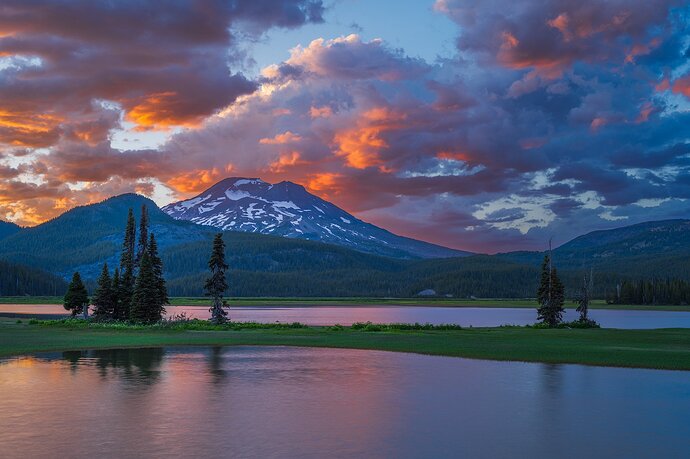First post
Re-post
Critique Style Requested: Standard
The photographer is looking for generalized feedback about the aesthetic and technical qualities of their image.
Description
I had a booth last weekend at a summer art festival in Bend, OR. That didn’t leave a lot of time or energy for photography, but Sunday night, after I was packed up, I saw the clouds to the west and hightailed it for Sparks Lake. I made it there just as the sun was sinking below the mountain to the left of this frame. The mosquitoes were abundant and ravenous, and I was in shorts, but with the dramatic cloud action I just swatted as many as I could and kept shooting until the light was gone.
Specific Feedback
-
I’m unsure about how much water to show in the foreground.
-
I decreased the WB to 4500 to bring out the color, but did not increase the saturation. It’s very colorful, but is it too much?
-
I’m finding that when I do a sky selection in PS, it’s not as clean as I would like. There are some edge artifacts that are hard to eliminate. At this resolution, it may not be visible, but there is a slight halo on the RH side of the mountain. Any suggestions out there?
Technical Details
Two frames, manually blended in PS. After adjusting each with curves layers, and flattening the image, I added a slight vignette using the camera raw filter.
Frame #1: 1.6 secs, f/16, ISO 31 (FG)
Frame #2: 0.4 secs, f/16, ISO 31 (sky)
Nikkor Z 24-120mm @39mm, Nikon Z7ii





